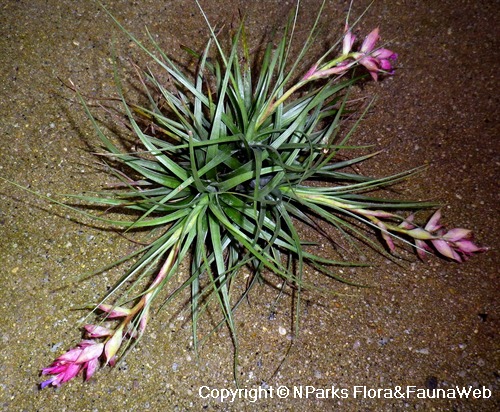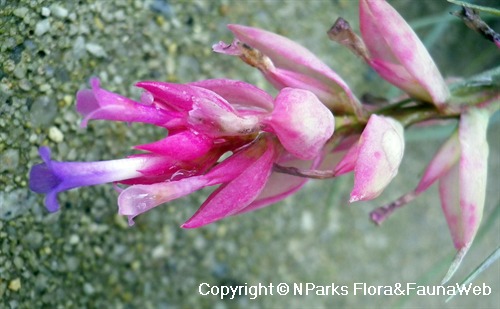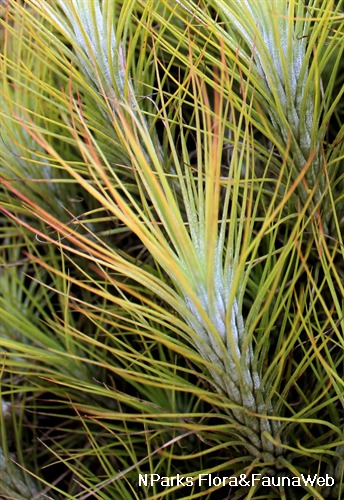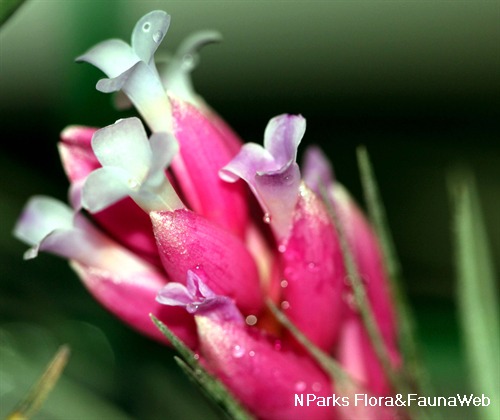
Name
Classifications and Characteristics
| Plant Growth Form | Epiphyte |
|---|---|
| Lifespan (in Singapore) | Perennial |
Biogeography
| Native Distribution | Venezuela, Brazil, Argentina, Paraguau, Uruguay, Suriname |
|---|---|
| Preferred Climate Zone | Tropical |
Description and Ethnobotany
| Growth Form | Clump forming Tillandsia species with rosettes of greyish-green leaves |
|---|---|
| Foliage | Silvery green appearance of the leaves are due to the presence of a layer of trichomes; these specialized cells are thought to filter off excessive sunlight and also help in the absorption of moisture and nutrients. |
| Flowers | Small purple flowers are subtended by large, bright pink bracts |
| Habitat | Epiphy |
| Cultivation | An easy species to cultivate. Local growers have observed that direct exposure to sun can lead to leaf burn in specimens and as such T.stricta is usually grown under filtered light conditions (one layer of shade net or approximately 20% shade). |
Landscaping Features
| Desirable Plant Features | Ornamental Flowers, Ornamental Foliage |
|---|---|
| Landscape Uses | Small Gardens |
Fauna, Pollination and Dispersal
| Fauna Pollination Dispersal Associated Fauna | Bird-Attracting |
|---|---|
| Pollination Method(s) | Biotic (Fauna) |
| Seed or Spore Dispersal | Abiotic |
Plant Care and Propagation
| Light Preference | Semi-Shade |
|---|---|
| Water Preference | Moderate Water |
| Pruning | Remove dead leaves from the plant/ clump |
| Fertilizing | Feed with dilute liquid/ foliar feed once every 2 weeks |
| Potential Problems | Prone to fungal/ bacterial rot if the plant is grown in areas that are not well ventilated, or if the plant is not allowed to dry out properly in between watering. |
| Diseases | Fungal/ baterial rot |
| Propagation Method | Seed, Division |
Foliar
| Foliage Retention | Evergreen |
|---|---|
| Mature Foliage Colour(s) | Green, Silver / Grey |
Floral (Angiosperm)
| Flower Colour(s) | Purple |
|---|---|
| Flower Texture(s) | Thin |
| Flower Grouping | Cluster / Inflorescence |
Image Repository
Others
| Master ID | 30891 |
|---|---|
| Species ID | 5268 |
| Flora Disclaimer | The information in this website has been compiled from reliable sources, such as reference works on medicinal plants. It is not a substitute for medical advice or treatment and NParks does not purport to provide any medical advice. Readers should always consult his/her physician before using or consuming a plant for medicinal purposes. |





